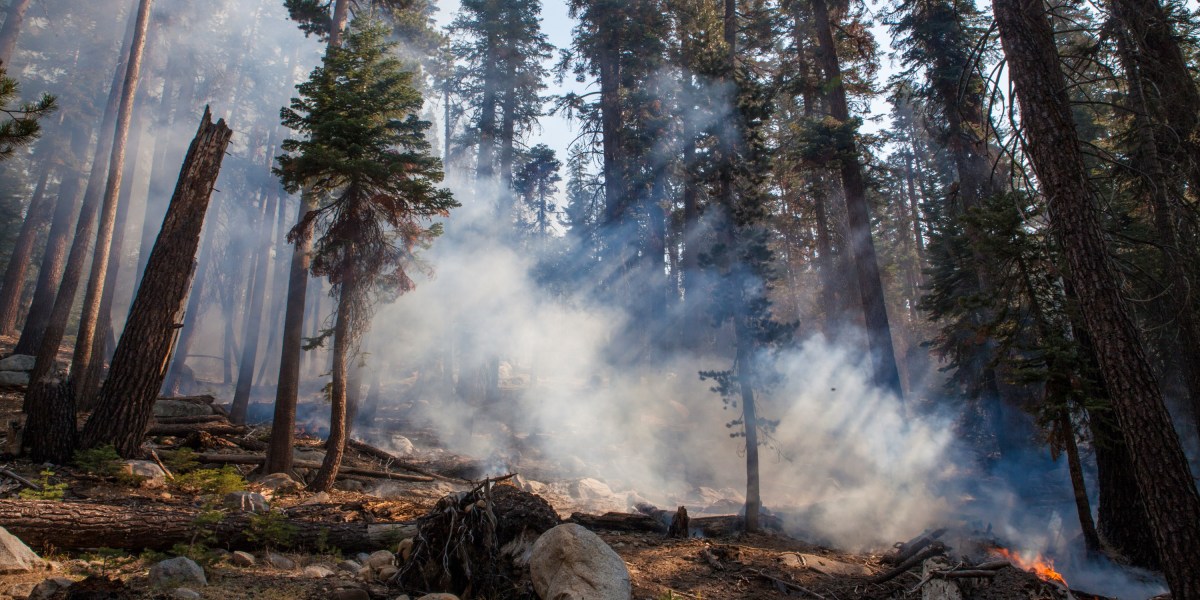A California startup is pursuing a novel, if simple, plan for ensuring that dead trees keep carbon dioxide out of the atmosphere for thousands of years: burying their remains underground.
Kodama Systems, a forest management company based in the Sierra Nevada foothills town of Sonora, has been operating in stealth mode since it was founded last summer. But MIT Technology Review can now report the company has raised around $6.6 million from Bill Gates’s climate fund Breakthrough Energy Ventures, as well as Congruent Ventures and other investors.
.
.
Trees are naturally efficient at sucking down vast amounts of carbon dioxide from the air, but they release the carbon again when they die and rot on the ground. Sequestering trees underground could prevent this. If biomass burial works as well as hoped, it may provide a relatively cheap and easy way to pull down some share of the billions of tons of greenhouse gas that studies find may need to be removed to keep global temperatures in check in the coming decades.
But until it’s been done on large scales and studied closely, it remains to be seen how much it will cost, how much carbon it could store, and how long and reliably it may keep greenhouse gases out of the atmosphere.
Forest experts have long warned that decades of overly aggressive fire suppression policies in the US have produced dense, overgrown forests that significantly increase the risk of major conflagrations when wildfires inevitably occur. Climate change has exacerbated those dangers by creating hotter and drier conditions.
Following a series of devastating fire years across the West, a number of states are increasingly funding efforts to clear out forests to reduce those dangers. That includes removing undergrowth, cutting down trees, or using controlled burns to break up the landscape and prevent fires from reaching forest crowns.
.
.
But today, the harvested plants and trees are generally piled up in cleared areas and then left to rot or deliberately burned. That allows the carbon stored in them to simply return to the atmosphere, driving further warming.
Kodama hopes to address both the wildfire dangers and the emissions challenge. The company says it’s developing automated ways of thinning out overcrowded forests that will make the process cheaper and faster (though it’s not yet discussing this part of the business in detail). After stripping off the limbs from trees too small to be sold for timber, they’ll load them into trucks and ship them to a prepared pit.
The key will be to ensure that what the company refers to as a “wood vault” keeps out oxygen and water that would otherwise accelerate decomposition and prevents greenhouse gases from leaking out.
.
.
They plan to cover the biomass with a geotextile liner and then bury that under soil and a layer of native vegetation selected to absorb moisture. Given the region’s dry conditions [Nevada], this will create a contained system that prevents “agents of decomposition from acting on the buried wood mass,” ensuring that the carbon stays in place for thousands of years, says Jimmy Voorhis, head of biomass utilization and policy at Kodama.
Kodama has raised more than $6 million from Bill Gates’ climate fund and other investors, as it pursues new ways to reduce wildfire risks and lock away carbon in harvested trees.

www.technologyreview.com
The question is, how much benefit relative to the cost. I got no problem with Bill Gates and others from funding this, but not the taxpayers. Maybe it's just my suspicious nature, but this has the feel of a high-cost venture that the gov't will eventually invest our money in that won't make a difference in terms of GW/CC. I ain't saying it won't work, but is it cost-effective?




